Daeseonggwan - Daebang-dong Branch (대성관 대방동)
5.2Km 2021-03-27
204-1, Yeouidaebang-ro, Dongjak-gu, Seoul
+82-2-815-0567
With a variety of Chinese dishes, it has a large space ideal for groups. The best menu at this restaurant is stir-fried meatballs and vegetables. This Chinese (cuisine) restaurant is located in Dongjak-gu, Seoul.
KPOP HOTEL SEOUL STATAION BRANCH
5.2Km 2021-04-09
16-17, Huam-ro 60-gil, Jung-gu, Seoul
+82-10-8774-5231
K-Pop Hotel is only a 2-minute walk from Exit 10 of Seoul Station on Subway Lines 1 & 4. It’s conveniently located near a number of tourist destinations, since it’s a mere 10-minute walk from Sungnyemun Gate and only a 15-minute walk from Namsan Park. Gyeongbokgung Palace is only a 10-minute ride away, with Insa-dong located a mere 12 minutes away from the hotel. The 24-hour front desk provides express check-in and check-out services as well as a safe deposit box. Featuring Standard Double Rooms, Twin Rooms, and Family Rooms, the hotel is a great place to stay for business travelers and tourists traveling with friend or family. All the rooms are furnished with air conditioner, cable/satellite TV channels, flat screen TV, free Wi-Fi connection, and hair dryer. There is a rooftop terrace and a cafe where breakfast is served. The cafe is also furnished with kitchen, desktop computer, and washing machine, which can be shared among the guests. If you want to park your car more conveniently and quickly, notify the front desk of your arrival in advance.
Museo Conmemorativo Appenzeller Noble (배재학당역사박물관)
5.2Km 2022-09-27
Seosomun-ro 11-gil 19, Jung-gu, Seúl
El Museo Conmemorativo Appenzeller Noble abrió en 2008 en el Instituto Pai Chai, una institución educacional de estilo occidental construida en 1916. El edificio del museo está designado como como Monumento de Seúl. Con exposiciones permanentes dispuestas dinámicamente, exposiciones especiales anuales y conferencias especiales, el museo ofrece una experiencia de aprendizaje única para los visitantes y personas que tengan interés en la historia de la educación en Corea.
Korea Samgyetang (고려삼계탕)
5.2Km 2025-05-19
1, Seosomun-ro 11-gil, Jung-gu, Seoul
Mirakjeong (미락정)
5.2Km 2021-03-30
52, Sejong-daero 9-gil, Jung-gu, Seoul
+82-2-778-7210
It is a place where pork cutlet is made directly with domestic pork. This restaurant's signature menu is house-made jumbo sized pork cutlet. This Korean dishes restaurant is located in Jung-gu, Seoul.
Seomun Hoegwan(서문회관)
5.3Km 2021-03-18
47, Sejong-daero, 11-gil, Jung-gu, Seoul
+82-2-755-0897
A bulgogi specialty restaurant located near City Hall Station in Seoul. The most famous menu is Korean beef bulgogi. Experience bulgogi, a Korean traditional dish.
Deungchon Kalguksu Beoseot Maeuntang (등촌칼국수버섯매운탕)
5.3Km 2021-03-27
68, Hwagok-ro 64-gil, Gangseo-gu, Seoul
+82-2-3661-2744
This place is known for generous servings and healthy meals. This Korean dishes restaurant is located in Gangseo-gu, Seoul. The representative menu is noodle soup.
Primera Iglesia Metodista de Jeong-dong (정동교회)
5.3Km 2022-03-31
Jeongdong-gil 46, Jung-gu, Seúl
La Iglesia de Jeong-dong de Seúl, fundada en 1898, fue la primera iglesia protestante en Corea. La iglesia tenía 380㎡ cuando se construyó, pero como se añadieron edificios en cada ala en 1926, hoy en día esta iglesia ocupa una extensión de 579 ㎡. La Iglesia de Jeong-dong ha sido designada como Sitio Histórico, mostrando una arquitectura gótica al estilo norteamericano. Dentro del terreno de la iglesia, se hallan un busto del fundador, el pastor Appenzeller, y un monumento en conmemoración del 50º aniversario de la fundación. En 1889, la iglesia apareció en una revista mensual llamada Church por celebrar la primera reunión de estudios de la Biblia en Corea, y también era una de las iglesias que lideraban las actividades misioneras. La Iglesia de Jeong-dong está situada en el centro de la hermosa calle Jeong-dong de Seúl, una zona que presenta un paisaje espléndido en otoño cuando las hojas se caen de los árboles. En sus inmediaciones se encuentran el Teatro Jeongdong, el palacio Deoksugung y el Museo de Arte de Seúl, por lo que esta área se convierte en un lugar perfecto para el turismo.
Ilpum Garden (일품가든)
5.3Km 2021-03-30
109-10, Seosomun-ro, Jung-gu, Seoul
+82-2-3789-7295
This is a restaurant where you can taste both shabu-shabu (sliced meat and vegetables boiled in water) and roasted meat. This Korean dishes restaurant is located in Jung-gu, Seoul. The representative menu is shabu-shabu.
Legación Rusa de Corea (서울 구 러시아공사관)
5.3Km 2022-03-04
Jeongdong-gil 21-18, Jung-gu, Seúl
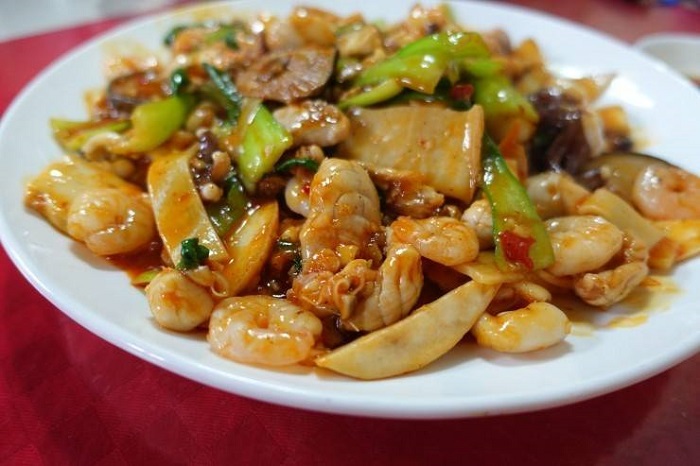
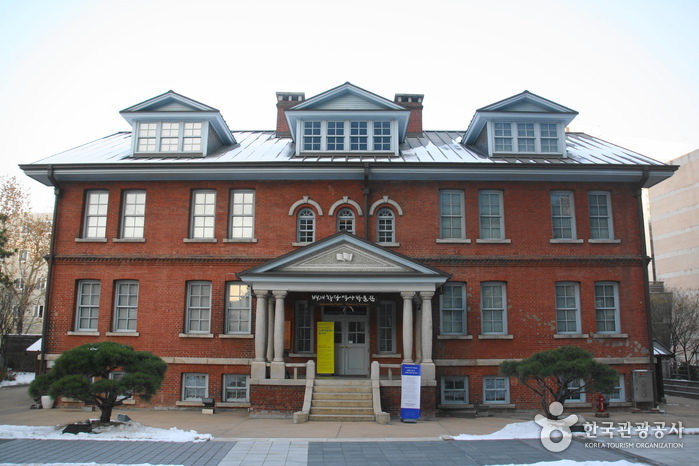
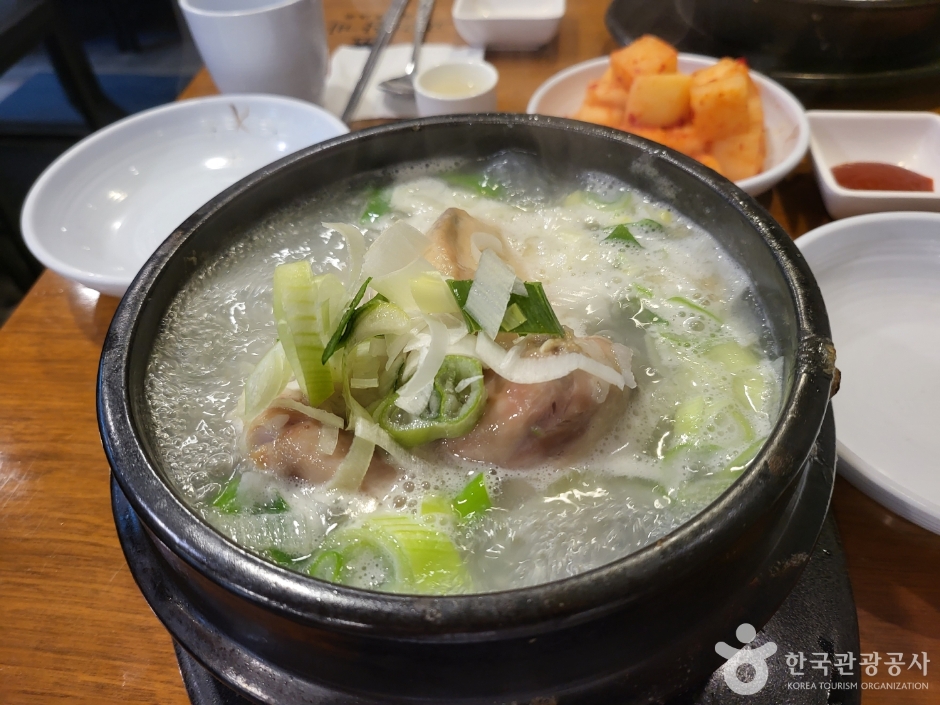
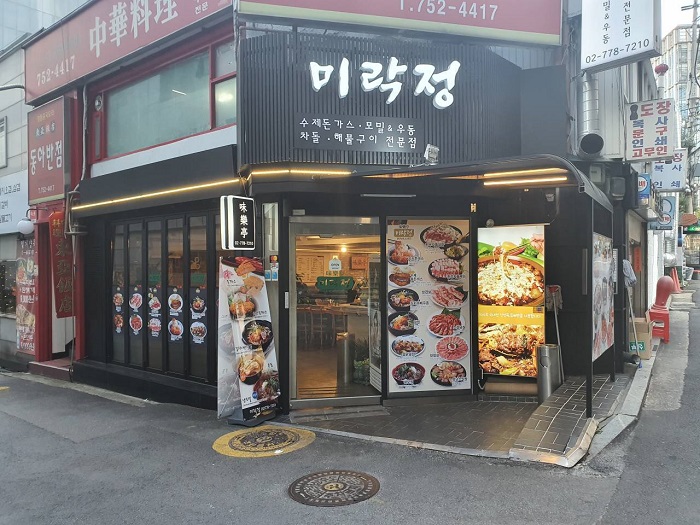

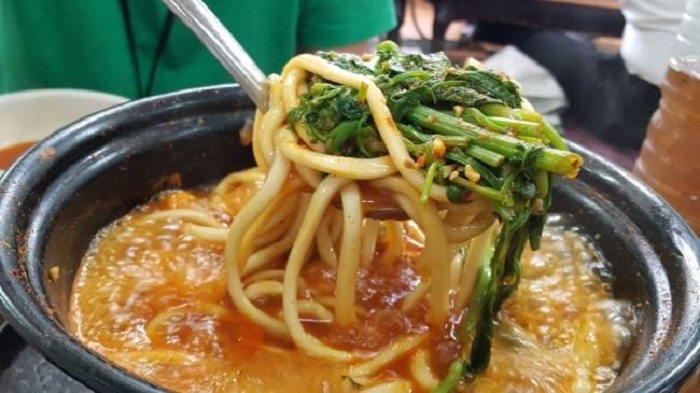
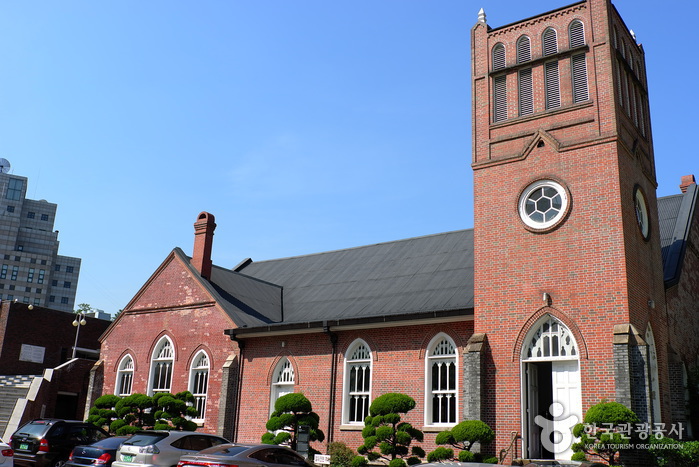
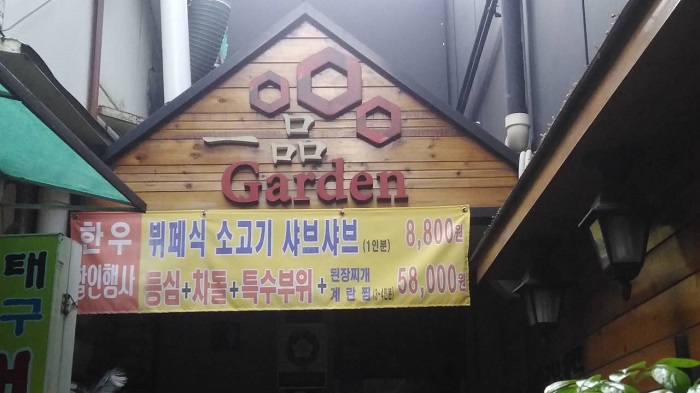
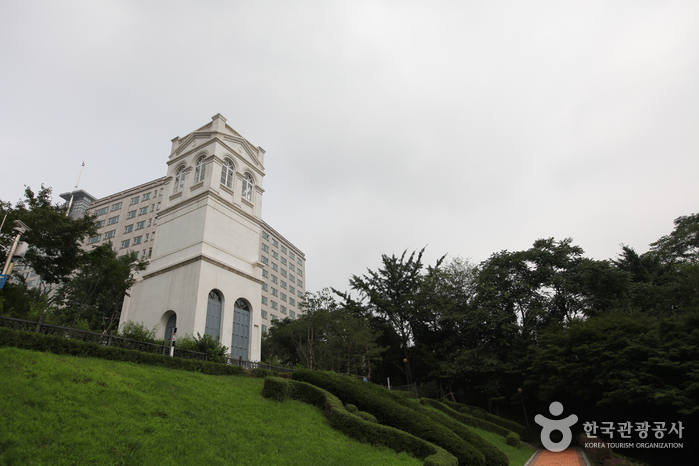
 Español
Español
 한국어
한국어 English
English 日本語
日本語 中文(简体)
中文(简体) Deutsch
Deutsch Français
Français Русский
Русский